6 Things You Should Know Before Visiting Qatar
Local expat Ulrike shares her tips on Qatari culture, places to visit, best time to go, and other important travel advice about this fascinating Middle Eastern state.
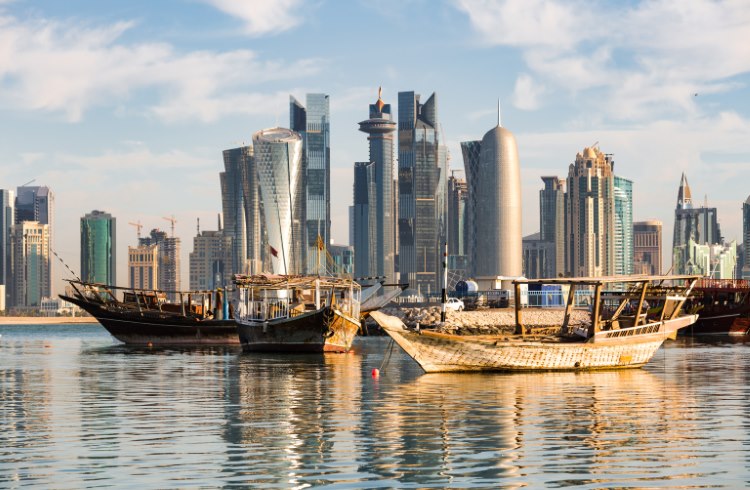 Photo © Getty Images / Matteo Colombo
Photo © Getty Images / Matteo Colombo
Until Qatar was named as host for the FIFA World Cup 2022, little was known about this small desert state jutting out on the eastern side of the Saudi Arabian Peninsula. Now, tourism numbers are rising in leaps and bounds, but many visitors are still taken by surprise when they arrive. Here are some facts and handy tips that will help you get the most out of your trip.
- Qatar facts that might surprise you
- Qatar is constantly and culturally changing
- Respecting the local culture
- Best months to visit Qatar
- There is more to Qatar than Doha
- Getting around Qatar
Qatar facts that might surprise you
Catarrh, cutter, guttar, cat-tar – so many ways to pronounce this nation’s name. Alas, none of them is correct, simply because Arabic is a phonetic language and our alphabets do not line up. To pronounce it correctly, you will need to close your throat, click your tongue, and basically use skills few non-Arabic speakers have. The closest is probably ct-ar, or gt-ar, while cat-ar is happily accepted.
Also, Qatar is not part of the United Arab Emirates. Yes, Qatar is ruled by an Emir, which makes it an emirate on paper, but the UAE is another country altogether.
Even though a flat, rocky desert country, Qatar has some special sand formations called the Singing Dunes, which “sing”, or rather groan, as you slide down them.
And, as a two-time resident here, I can confirm that despite the many misconceptions people have about the Middle East in general, Qatar is repeatedly listed by the global database Numbeo as the world’s safest country. Where else would you see women leaving their handbags on their chair in cafes when going to the toilet? (Editor's note: we still don’t recommend leaving your bags unattended.)
Oh, and remember that the weekend here is Friday/Saturday, so the big thing to enjoy in Doha is Friday Brunch.
Qatar is constantly and culturally changing
Over recent years, Qatar has evolved into a veritable art hub, and it starts in Hamad International Airport, with sculptures including Urs Fischer’s Lamp Bear and Small Lie by KAWS. Dotted throughout the country you find public art such as Maman by Louise Bourgeois, and several sculptures by Richard Serra, including the fabulous East-West/West-East, right in the middle of nowhere in the desert.
There are world-class museums, plus the atmospheric Souq Waqif, a traditional souq full of cafes, small shops, and restaurants, and Katara Village, a purpose-built cultural hub which is not only a perfect spot for an afternoon stroll but also the place where you can get the best local breakfast of a spiced tea called Karak and a thin omelette rolled into a chapatti.
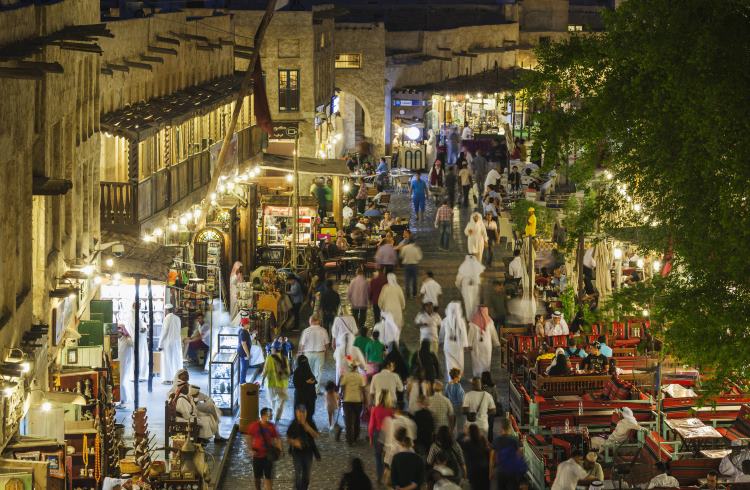
Recently added bonuses to the daily lifestyle include the world’s longest continuous dedicated cycle path, nature reserves, and many cultural events, making it a far easier place to live in – and visit – than it was 20 years ago, when I first moved here.
Respecting the local culture
Qatar is an Islamic country and although it’s quite liberal and tolerant, travelers here are advised to respect local customs, cover their shoulders, and refrain from wearing shorts in the city. While you do see people in tank tops and shorts on occasion, and nobody says anything, if you want to enter public buildings, or the metro for example, you may well get stopped and asked to cover up.
That said, in the hotels sleeveless tops and shorts are perfectly acceptable, as are bikinis or other swimwear at hotel beaches and pools.
The holy month of Ramadan (the date of which shifts by around 10 days every year due to the different calendars used) is a double-edged sword when visiting. On one hand, I love witnessing the local customs, such as the breaking of the fast – called Iftar – which takes place after sunset, with families often erecting tents outside their homes to feed friends, neighbors, and those less fortunate. All the shops and restaurants are decorated, and normal life pretty much happens at night.
On the other hand, for non-fasting residents and visitors this time is also a little more trying as it is strictly forbidden to be seen eating and drinking, or even chewing gum or smoking, in public between sunrise and sunset. All restaurants and cafes remain closed during the day, except usually one in each of the bigger hotels, which remain open for guests.
Best months to visit Qatar
This place gets hot, and when I say hot, I mean hot: in summer, temperatures of 122⁰F (50⁰C) and above are the norm, even if official tables always state the low-100s ⁰F (mid-40s ⁰C) as a maximum temperature. In the daytime, the heat is mostly dry, with humidity limited to evenings and night-time. At night, stepping out of your air-conditioned confines into the open is a little like being smacked in the face with a wet flannel, and if you wear glasses, be prepared for not being able to see for a while before you adjust to the temperature difference.
During the summer months, the country pretty much shuts down, with very few events taking place, and people only moving in their air-conditioned cars between their air-conditioned homes to their air-conditioned workplace or an indoor, air-conditioned mall. Being outside is practically impossible.
But come “the season”, i.e., late autumn, winter, and early spring, the country comes alive, with events and exhibitions taking place daily, and everybody enjoying being able to be outdoors.
To get the best of the warmth while still being able to explore, the ideal time to visit is autumn through spring (generally any time between October and April). Bear in mind that in December and January the sea cools down a little, but daytime temperatures are still lovely.
There is more to Qatar than Doha
For millennia, the Arabian Peninsula was inhabited by nomadic Bedouins, resulting in few – but impressive – permanent markers of history. Along the northern coast, the Zubarah Fort archaeological complex has been designated a UNESCO World Heritage site; there are some superb examples of ancient petroglyphs on rocky outcrops at Jassasiya, and a handful of other sites, including Bronze Age settlements and ancient tombs, have only recently been discovered.
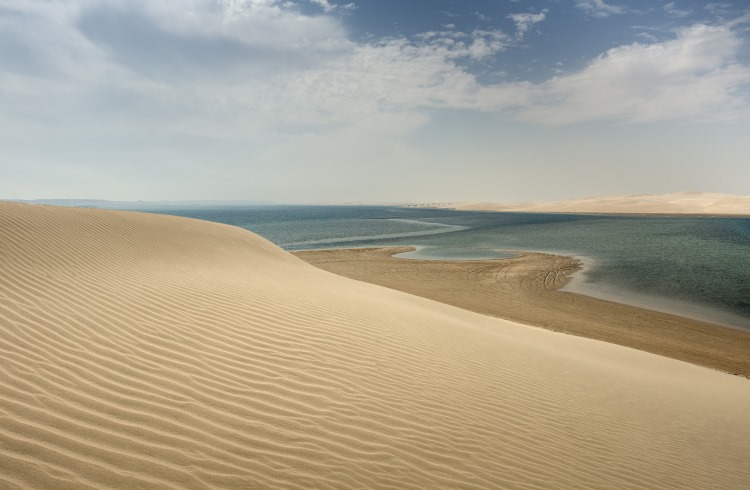
In my mind, the most beautiful part of Qatar’s desert is along the Khor Al Adaid (the Inland Sea), on the border to Saudi Arabia, where endless sand dunes line an inlet of the gulf, forming a turquoise sea which attracts flamingos and other migratory birds in winter. This spot is popular with campers and adrenaline junkies who go “dune-bashing” (i.e., driving in 4WDs at somewhat unnatural angles across the dunes), go sandboarding, scuba-diving, or simply enjoy the amazing starry sky at night, away from the cities’ light pollution.
Getting around Qatar
Within Doha, the best way to get around is the modern metro system, which is inexpensive and whose three lines connect most points from the airport to the old town, West Bay with its hotels, and other hotspots.
For other short journeys, Uber is the favored mode of transport here, but for exploring the country, a rental car, with or without a driver, is a must. Driving is on the right, and you can drive with most national driving licenses for seven days, and longer with an International Driving License.
Related articles
Simple and flexible travel insurance
You can buy at home or while traveling, and claim online from anywhere in the world. With 150+ adventure activities covered and 24/7 emergency assistance.
Get a quote
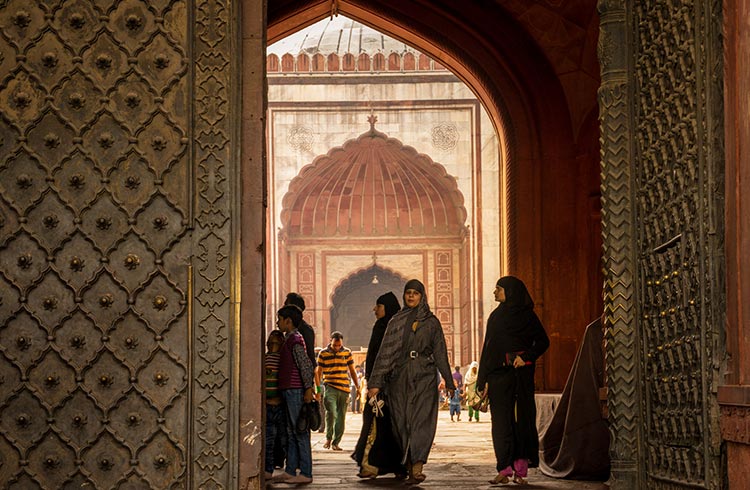
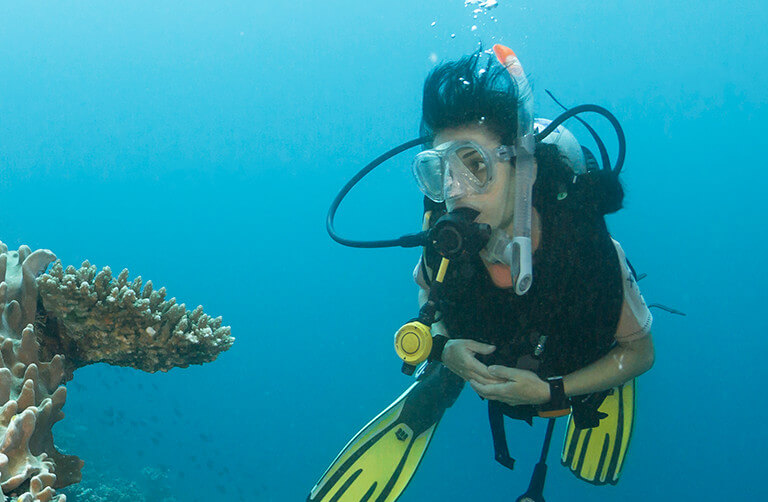
No Comments